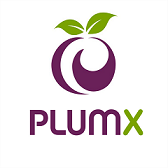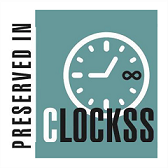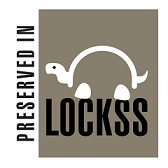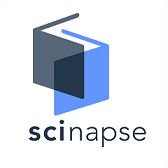Vocabulary Knowledge for Proficiency in English as a Second Language – A Literature Review
Abstract
Vocabulary knowledge is fundamental to language development, learning, and use. It is commonly held that without sufficient vocabulary knowledge, little can be communicated effectively in a language. However, in the English as a second language context, knowledge of vocabulary, the vocabulary size that guarantees high language proficiency, and how it is measured, remains scattered in individual studies, hence unclear to many researchers, teachers, and language learners. This paper reviews studies on vocabulary knowledge necessary for proficiency in English as a second language. The aim is to synthesise, analyse, and provide a comprehensive picture of the scholarly development of vocabulary knowledge and language proficiency research in L2 learning of English. The Protocol, Search, Appraisal, Synthesis, Analysis, and Reporting (PSALSAR) methodology provides an analytical framework for this study. The study synthesises and thematically reports insights on vocabulary size and knowledge required for second language proficiency, and the various approaches/tools for measuring vocabulary knowledge in English as a second language. Findings reveal that 98% of lexical coverage, which translates into the most frequent 2000-word families, is sufficient for the comprehension of reading a variety of texts. For productive skills, the coverage of 4000–5000-word families is necessary for students’ speaking and writing skills. Relatedly, knowing a word means knowing its features, behaviour, and use in various contexts. To effectively measure vocabulary size, the Vocabulary Levels Test (VLT), Academic Word Levels (AWL), and Vocabulary Size Test (VST) are used. To measure deep knowledge of vocabulary, the Vocabulary Knowledge Scale (VKS), Word Associates Test (WAT), and Word Part Levels Test (WPLT) are commonly used. The understanding of the vocabulary knowledge requirements is crucial for setting vocabulary learning goals, designing curricula, and developing appropriate vocabulary learning materials.
Downloads
References
Beck, I. L., McKeown, M. G., & Kucan, L. (2013). Bringing words to life: Robust vocabulary instruction. New York: Guilford Press.
Benrabah, B. (2019). Language Proficiency through Vocabulary Development: A Framework. Arab World English Journal, (1), 78–85. https://doi.org/10.24093/awej/chief1.7
Bruton, A. (2009). The Vocabulary Knowledge Scale: A Critical Analysis. Language Assessment Quarterly, 6(4), 288–297. https://doi.org/10.1080/15434300902801909
Calzavarini, F. (2017). Inferential and referential lexical semantic competence: A critical review of the supporting evidence. Journal of Neurolinguistics, 44, 163–189. https://doi.org/10.1016/j.jneuroling.2017.04.002
Daller, H., & Xue, H. (2010). Lexical richness and the oral proficiency of Chinese EFL students. Modelling and Assessing Vocabulary Knowledge, (January), 150– 164. https://doi.org/10.1017/cbo9780511667268.011
Ellis, N. C. (1997). Vocabulary : Description, Acquisition and Pedagogy, Edited by. English, (January 2008), 122–139.
Gardner, D. (2013). Exploring Vocabulary: Language in Action. Routledge: Taylor & Francis.
González-Fernández, B., & Schmitt, N. (2020). Word knowledge: Exploring the relationships and order of acquisition of vocabulary knowledge components. Applied Linguistics, 41(4), 481–505. https://doi.org/10.1093/applin/amy057
Gyllstad, H. (2013). Looking at second language vocabulary knowledge dimensions from an assessment perspective - challenges and solutions. In C. Bardel, L. Christina, & B. Laufer (Eds.), EUROSLA Monograph Series. EUROSLA.
Hyland, K. E. N. (2007). Is There an “Academic Vocabulary”?, 41(2), 0–3.
Kaneko, M. (2015). Vocabulary Size Required for the TOEFL iBT Listening Section. The Language Teacher, 39(1), 9. https://doi.org/10.37546/jalttlt39.1-2
Kiliç, M. (2019). Vocabulary knowledge as a predictor of performance in writing and speaking: A case of Turkish EFL learners. Pasaa, 57(June), 133–164.
Koizumi, R. (n.d.). Relationships Between Productive Vocabulary Knowledge and Speaking Performance of Japanese Learners of English at the Novice Level. PhD Dissertation.
Koizumi, R. (2017). Vocabulary Knowledge and Speaking Proficiency among Second Language Learners from Novice to Intermediate Levels. https://doi.org/10.4304/jltr.4.5.900-913
Kremmel, B., & Schmitt, N. (2016). Interpreting Vocabulary Test Scores: What Do Various Item Formats Tell Us About Learners’ Ability to Employ Words? Language Assessment Quarterly, 13(4), 377– 392. https://doi.org/10.1080/15434303.2016.1237516
Laufer, B. (1991). The development of L2 Lexis in the expression of the advanced language learner. Modern Language Journal, 75(4), 440–448.
Laufer, B. (1992). How much lexis is necessary for reading comprehension? Vocabulary and Applied Linguistics.
Laufer, B. (2010). Lexical threshold revisited : Lexical text coverage, learners ’ vocabulary size and reading comprehension, 22(1), 15–30.
Laufer, B. (2014). New perspectives on assessment and corpus analysis University of Stockholm University of Haifa.
Laufer, B., & Goldstein, Z. (2004). Testing vocabulary knowledge: Size, strength, and computer adaptiveness. Language Learning, 54(3), 399–436. https://doi.org/10.1111/j.0023-8333.2004.00260.x
Laufer, B., & Nation, P. (1995). Vocabulary size and use: Lexical richness in L2 written production. Applied Linguistics, 16(3), 307–322. https://doi.org/10.1093/applin/16.3.307
Laufer, B., & Nation, P. (1999). A vocabulary-size test of controlled productive ability. Language Testing, 16(1), 33– 51. https://doi.org/10.1177/026553229901600103
Miller, G. A. (1999). On Knowing a Word. Annual Review of Psychology, 50, 1–19.
Milton, J. (2013). Measuring the contribution of vocabulary knowledge to proficiency in the four skills. L2 Vocabulary Acquisition, Knowledge and Use: New Perspectives on Assessment and Corpus Analysis, (1983), 57–78.
Milton, J., & Hopkins, N. (2006). Comparing phonological and orthographic vocabulary size: Do vocabulary tests underestimate the knowledge of some learners? Canadian Modern Language Review, 63(1), 127–147.
Nation, I. (2006). How large a vocabulary is needed for reading and listening?. Canadian modern language review, 63(1), 59-82.
Nation, I. S. Paul. (2001). Learning Vocabulary in Another Language. Cambridge: Cambridge University Press. https://doi.org/10.1093/elt/56.1.91
Read, J. (2004). Research in Teaching Vocabulary. Annual Review of Applied Linguistics, 24, 146–161. https://doi.org/10.1017/s0267190504000078
Samnani, S. S., Vaska, M., Ahmed, S. & Turin, T. C. (2017). Review Typology: The basic types of reviews of synthesizing evidence for the purpose of knowledge translation. Journal of the College of Physicians and Sergeons Pakistan vol. 27(10) 635-641
Schmitt, D., & Trent, N. (2017). Replication Studies How much vocabulary is needed to use English ? Replication of, (March 2015), 212–226. https://doi.org/10.1017/S0261444815000075
Schmitt, N., Jiang, X., & Grabe, W. (2011). The percentage of words known in a text and reading comprehension. The modern language journal, 95(1), 26-43.
Shen, M. (2008). 111 The Reading Matrix Vol. 8, No. 2, September 2008. Matrix, 8(2), 193–194.
Sibold, C. (2011). Building English language learners’ academic vocabulary. Multi-Cultural Education, 18(2), 24–28.
Stringer, D. (2019). Lexical semantics: Relativity and transfer. Applied Linguistics for Teachers of Culturally and Linguistically Diverse Learners, 180– 203. https://doi.org/10.4018/978-1-5225-8467-4.ch007
Stubbe, R. (2012). VLI Editorial Team, 1(1).
Treffers-Daller, J. (2013). Measuring lexical diversity among L2 learners of French: an exploration of the validity of D, MTLD and HD-D as measures of language ability. Vocabulary Knowledge: Human Ratings and Automated Measures, 79–103.
Uchihara, T. & Harada, T. (2018). Roles of Vocabulary Knowledge for Success in EMI: Self-Perceptions and Academic Outcomes of Japanese Undergraduates. TESOL Quarterly
Uchihara, T., & Saito, K. (2019). Exploring the relationship between productive vocabulary knowledge and second language oral ability. Language Learning Journal, 47(1), 64–75. https://doi.org/10.1080/09571736.2016.1191527
Webb, S. (2008). Receptive and productive vocabulary sizes of L2 learners. Studies in Second Language Acquisition, 30(1), 79–95. https://doi.org/10.1017/S0272263108080042
Webb, S. (2009). The effects of receptive and productive learning of word pairs on vocabulary knowledge. RELC Journal, 40(3), 360–376. https://doi.org/10.1177/0033688209343854
Webb, S. A., & Sasao, Y. (2013). New directions in vocabulary testing. RELC Journal, 44(3), 263–277. https://doi.org/10.1177/0033688213500582
Webb, S., Sasao, Y., & Ballance, O. (2017). The updated Vocabulary Levels Test. ITL - International Journal of Applied Linguistics, 168(1), 33– 69. https://doi.org/10.1075/itl.168.1.02web
Yamamoto, Y. M. (2011). Bridging the Gap between Receptive and Productive Vocabulary Size through Extensive Reading. The Reading Matrix, 11(3), 226–242.
Zeeland, H. Van, & Schmitt, N. (2013). ScienceDirect Incidental vocabulary acquisition through L2 listening : A dimensions approach. System, 41(3), 609–624. https://doi.org/10.1016/j.system.2013.07.012
Zhong, H. F. (2018). The relationship between receptive and productive vocabulary knowledge: a perspective from vocabulary use in sentence writing knowledge: a perspective from vocabulary use in sentence writing. The Language Learning Journal, 46(4), 357–370. https://doi.org/10.1080/09571736.2015.1127403
Copyright (c) 2025 Fridah Katushemererwe, PhD, Rodney Rugyema, PhD

This work is licensed under a Creative Commons Attribution 4.0 International License.




























